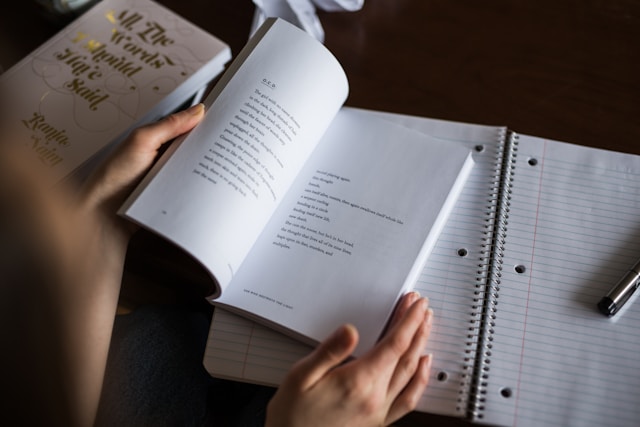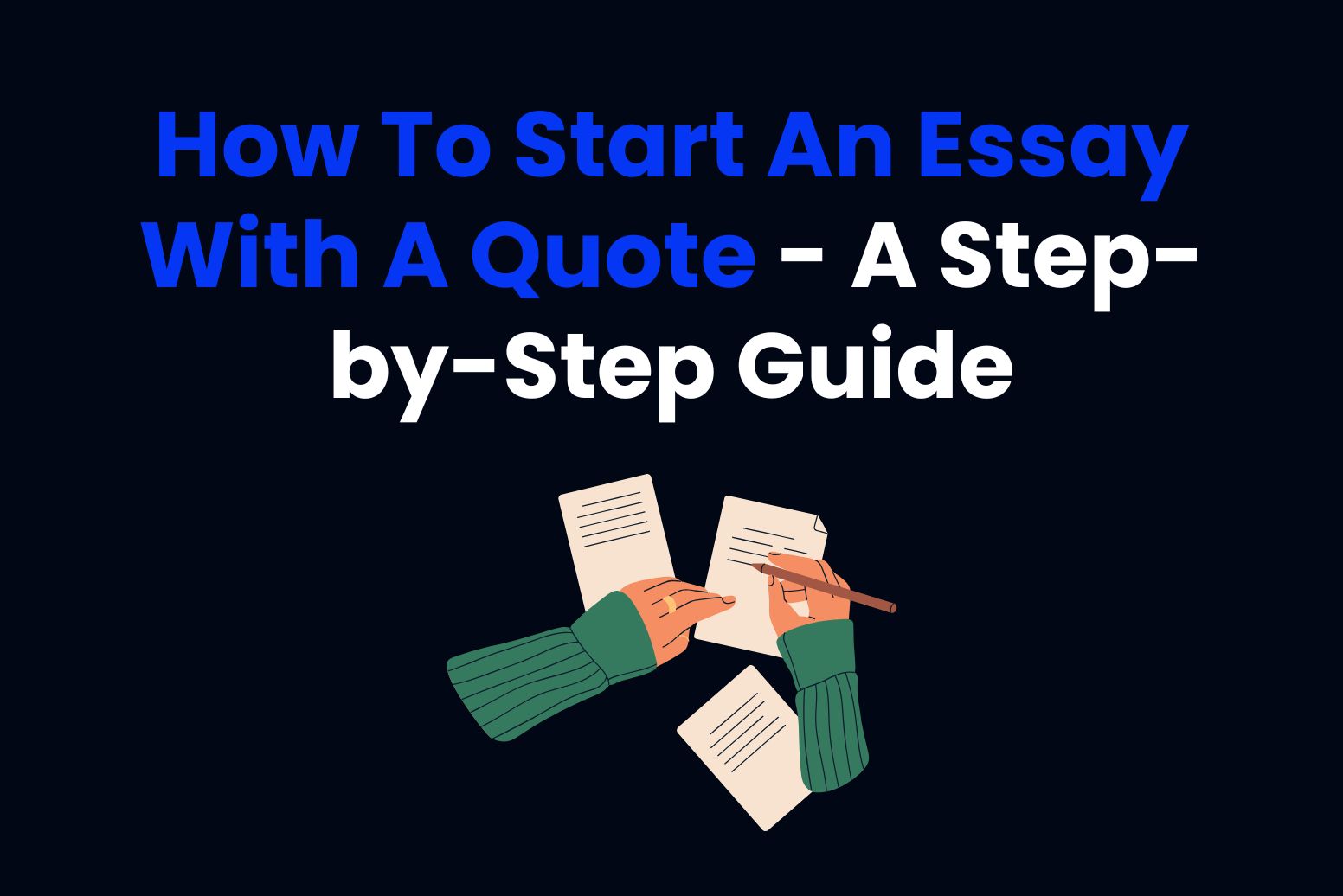
Would you like to follow in the footsteps of William Shakespeare and learn how to write a sonnet?
I don’t blame you. Sonnets, at least in my mind, are literary masterstrokes. Though formulaic, they’re a beautiful way to express your innermost thoughts and emotions and are a type of creative writing loved by poets and students over the years.
But what exactly is a sonnet? How do you write one? What steps do you need to take, and which language should you include?
As a former English literature student, I was taught by one of my favorite university professor how to write a sonnet. At the same time, I learned the art of haiku writing, as well as how to write conventional poems.
Alongside Shakespeare, I marveled at the work of writers like John Keats and Sir Thomas Wyatt and used their literary brilliance as a source of inspiration.
So, without further ado, I want to show you how to write a sonnet. I draw on my literary training and present a simple guide to sonnet writing. I will also show you, with the advent of the latest technology, how you can write a sonnet in seconds – something that Shakespeare and his peers would never have thought possible!
First: What is a sonnet?
A sonnet is a type of poem. The word “sonnet” comes from the Italian “sonnetto,” meaning “a sound,” which should give you a clue about this type of literature.
There are strictly 14 lines in a sonnet, divided into four subgroups. The first three are known as “quatrains” as they have four lines apiece. The final sub-group has just two lines.
However, the main characteristic of the sonnet is that each line should consist of ten syllables. This is what makes it unique – the sound that it creates when spoken aloud is rhythmic and alluringly formulaic.
A brief history of sonnets & a Shakespearean example

Though the sonnet undeniably has its roots in 13th-century Italy, it was Petrarch around 100 years later that popularized the form.
In the 1500s, the sonnet made its way to Britain, where Sir Thomas Wyatt translated much of Pertrach’s work. Sonneteers, as they would become known, followed suit, with the likes of William Shakespeare, John Donne, and John Keats all embracing the literary technique to create memorable works.
Today, it is Shakespeare, not Wyatt, regarded as the most illuminating sonneteer in history. The legendary playwright authored over 150 sonnets in his life. Perhaps his best-known is Sonnet 18, Shall I Compare Thee to a Summer’s Day:
Shall I compare thee to a summer’s day?
Thou art more lovely and more temperate;
Rough winds do shake the darling buds of May;
And summer’s lease hath all too short a date;
Sometime too hot the eye of heaven shines,
And often is his gold complexion dimm’d;
And every fair from fair sometimes declines,
By chance or nature’s changing course untrimm’d;
But thy eternal summer shall not fade,
Nor lose possession of that fair thou ow’st;
Nor shall death brag thou wander’st in his shade,
When in eternal lines to time thou grow’st;
So long as men can breathe or eyes can see,
So long lives this, and this gives life to thee.
How to write a sonnet – format and rules
Okay, so before we dive into this section on how to write a sonnet, understand that it’s difficult. It’s a bit like writing a hit song or a detective novel that sells over 100 million copies.
I can show you how to do it, and I can lay out the formula, but it won’t necessarily lead to success. Writing poetry is a creative art that few have mastered over the years. You must be a talented wordsmith to excel in this discipline, so I can only show you the way; I can’t guarantee your success!
Still, if you’re keen to start writing poetry in your own time, let’s look at how to write a sonnet. First, the rules:
Sonnet writing rules
- A sonnet must have 14 lines.
- It should be split into four subgroups. The first three groups should have four lines apiece. The final group should have two lines. The first three groups are called “quatrains.”
- There should be ten syllables per line.
- Sonnets should contain a volta (a turn), which is a notable change in theme or tone.
- Most sonnets follow an A-B-C-B rhyming scheme – more on this shortly.
Format & rhyming
Most types of poems don’t have specific rules guiding them and are subject to the writer’s interpretation. This is one reason why sonnets are unique, as they must follow the rules above to be regarded as sonnets.
The format of sonnets has been fairly uniform throughout history, as shown above, but the rhyming convention is not standard. As I learned in my university studies, Shakespeare followed his own rules when writing sonnets.
Most Shakespearean sonnets follow a rhyming scheme that isn’t clear from the outset. But when you break it down, as shown in the Sonnet 18 example above, it is as follows:
- Line 1 – A
- Line 2 – B
- Line 3 – A
- Line 4 – B
- Line 5 – C
- Line 6 – D
- Line 7 – C
- Line 8 – D
- Line 9 – E
- Line 10 – F
- Line 11 – E
- Line 12 – F
- Line 13 – G
- Line 14 – G
Other sonneteers followed the A-B-C-B scheme in groups 1-3, while others stuck to A-B-A-B throughout, followed by two rhyming couplets in the final group. My advice is to stick to what you find easiest when you’re learning how to write a sonnet.
Iambic pentameter
You also need to think about the pace or meter of the sonnet. In other words, how many syllables you use when writing each line.
In the world of Shakespeare, this is known as the sonnet’s iambic pentameter. To learn how to write a sonnet, you need to understand this concept.
In poetry, an “iamb” is a beat consisting of one unstressed syllable followed by a stressed syllable. There are numerous examples in the English language:
- Re – LEASE
- De – LIGHT
- Day – DREAM
Pentameter means five meters. So, when a line of poetry is written in iambic pentameter, it means that it consists of five sets of stressed and unstressed syllables.
The perfect example of this is the first line of Shakespeare’s wonderful Sonnet 18, already introduced above:
Shall – I | com – PARE | thee – TO | a SUM | mer’s DAY? |
1 2 3 4 5
The reason that iambic pentameter is used is that it’s naturally sounding and easy on the ear. It’s still used today, with many pop stars writing their lyrics in this format.
Content & theme
You also need to think carefully about the language that you use in a sonnet. Most sonnets are love poems, and this style is well suited to such work.
You won’t, for instance, often see a sonnet written with an overtly negative tone (though Shakespeare and other writers have expressed tragic sentiments in sonnets over the years).
The reason that sonnets tend to be love poems is that Petrarch himself, the founder of the format, wrote an initial stream of sonnets about a woman named Laura.
Shakespeare continued much of this tradition, evoking romanticism, envy, and unrequited love for individuals, lands, and other topics.
So, if you want to write a sonnet, it’s best to stick to love as the topic, though you can mix things up.
How to write a sonnet with advanced AI
Given all these rules and rhyming regulations, it can be difficult to start a sonnet. In fact, when I was a young student, I remember grappling so much with the format that it extinguished much of my creativity.
Use our Free AI Poem Generator, which is a brilliant way to channel your creativity without worrying too much about format, rules, and pentameter.
You can simply use the prompt to write a poem about a specific topic or subject that you’re interested in. I asked Arvin to write me a poem about love; here’s the first stanza:

In the garden of my heart, love blooms
A delicate flower that never consumes
Its petals soft, its scent divine
A love that never fails to shine
Good start, but it’s not a sonnet.
Advanced – Using AI to create a sonnet
One of the things to realize about AI and creative writing is that you need to be as specific as possible with the prompt. Watch what happens when I task Arvin with writing a sonnet about the beauty of rural England:
In rural England, beauty can be found,
In rolling hills and fields of golden wheat.
The gentle breeze, the peaceful sights and sounds,
A tranquil retreat, a peaceful, sweet retreat.
The quaint old villages, with thatched roofed homes,
The winding lanes that lead to secret spots.
The ancient churches, where the bell still chimes,
A timeless place, where time stands still, and not.
The countryside alive with nature’s grace,
With meadows full of flowers, birds in flight.
The changing seasons, each a new embrace,
A symphony of colors, pure delight.
So let me wander through this land so fair,
And breathe in all the beauty that is there.
You can see the A-B-A-B, C-D-C-D, E-F-E-F, and G-G rhyming rules in motion. We also have fourteen lines, including three initial groups of four lines apiece and the final group of two lines.
Each sentence also has ten syllables, though the iambic pentameter is not quite up to scratch – we can perhaps work on this ourselves.
This example illustrates how you can use AI to help you write a sonnet in seconds. I recommend playing around with our Poem Generator and asking it to write on different topics before settling on your favorite piece. You can then adjust and adapt it to meet your needs.
Conclusion: How to write a sonnet
So, here are the main steps to follow to write a sonnet correctly:
- Understand the format and structure of a sonnet – 14 lines, 4 sub-groups.
- Follow an appropriate rhyming pattern.
- Make sure the correct beat is followed (ten syllables per line).
You can experiment and explore different ways of writing a sonnet yourself. Alternatively, prompting Arvin AI for poetry help is a smart move. Our Poetry Generator is the perfect tool to create sonnets in seconds and will help to bolster your creativity.
When you’re done, use our free AI Grammar Checker to make sure it stands up and doesn’t have any typos or grammatical errors that you may have missed when proofreading your work.
How to write a sonnet FAQ
What are the three rules of a sonnet?
The three main rules of a sonnet to remember are:
- 14 lines.
- 10 syllables per line.
- 4 subgroups (3 x 4 lines and 1 x 2 lines).
You also need to make sure that your sonnet follows a specific rhyming convention and always check for iambic pentameter at the end of the piece.
Are sonnets hard to write?
It’s fair to say that sonnets are one of the most difficult types of poetry to write, primarily due to their rigid structure and rhyming requirements. That said, they can be immensely satisfying to get right. Once you’ve written your first sonnet, the form will become like second nature. Don’t forget you can also ask Arvin to help you get started if you’re struggling with sonnet writing.
What does GG mean in a sonnet?
GG refers to the rhyming scheme in the final two lines of a sonnet. In other words, the final two lines should have words at the end that rhyme with one another. This is exemplified in Shakespeare’s Sonnet 18, in which he ends the last two lines with “see” and “thee.”






